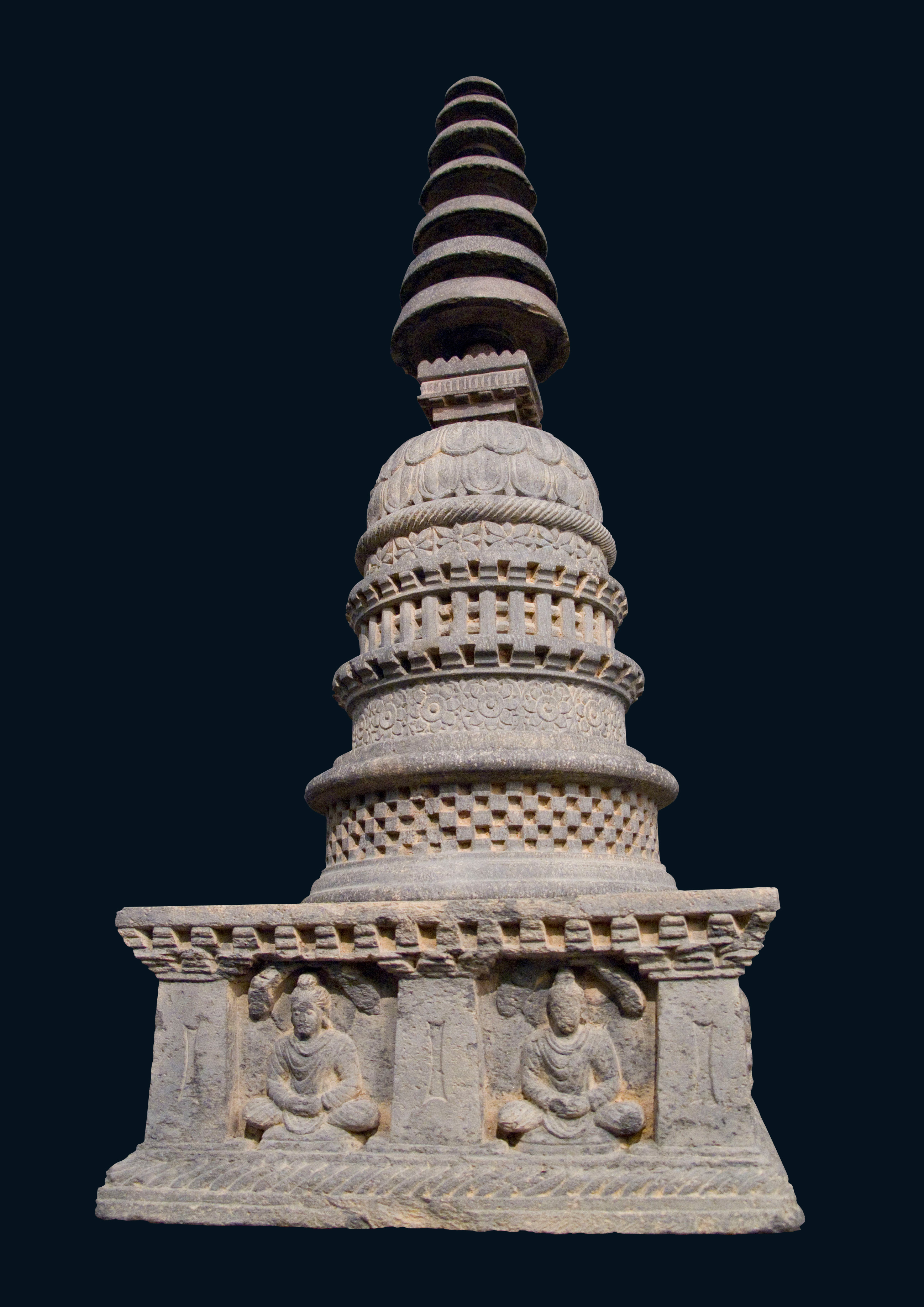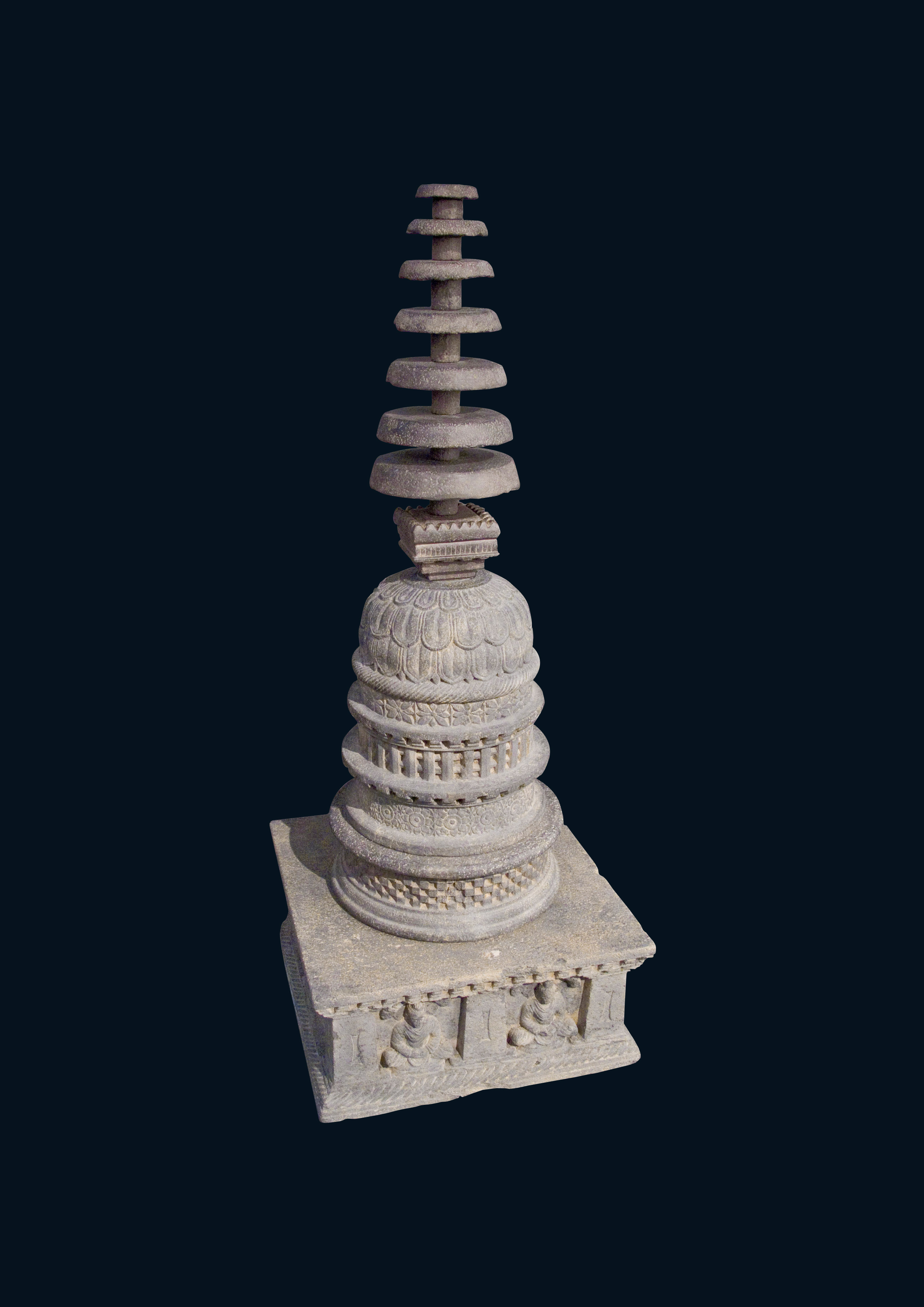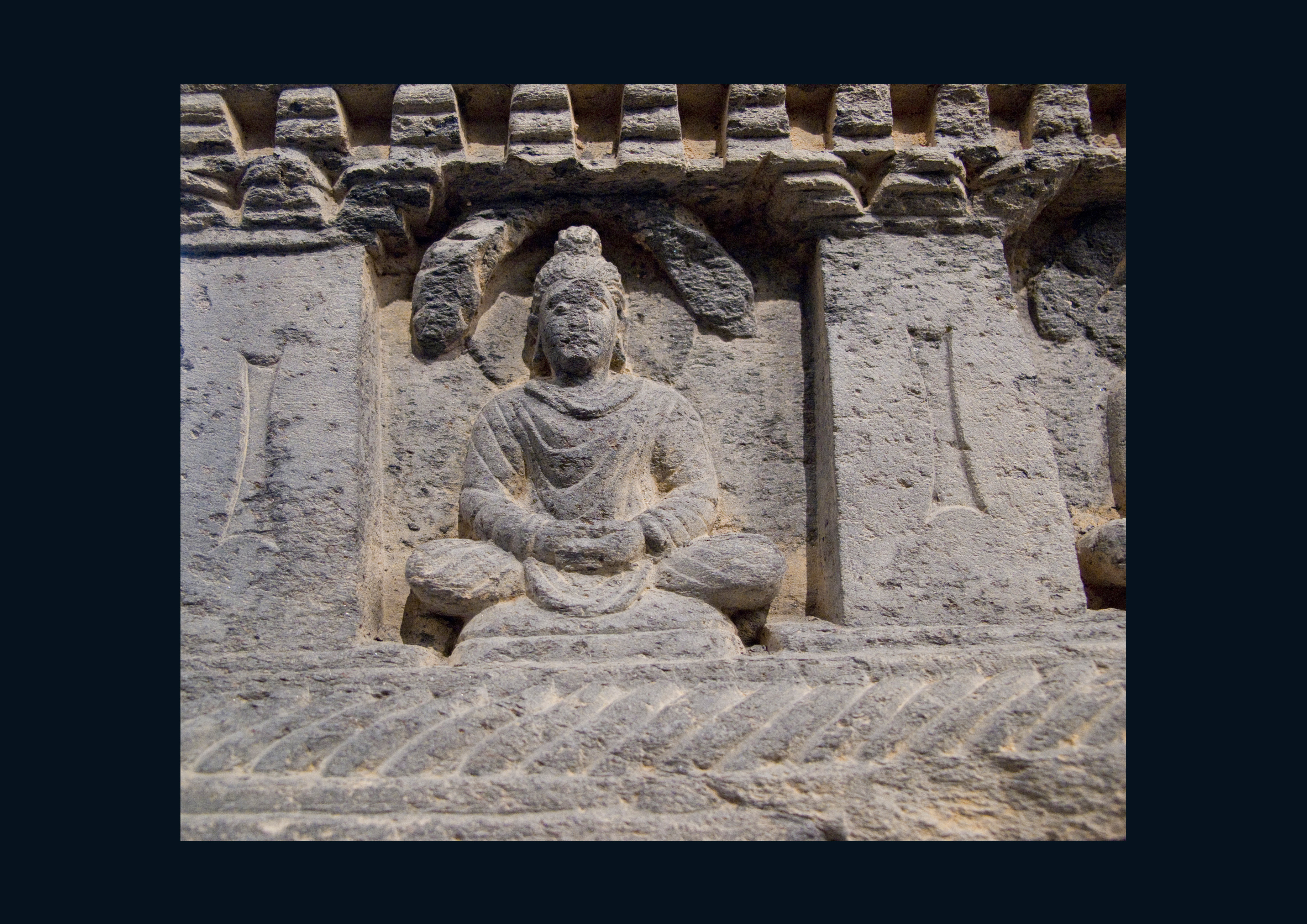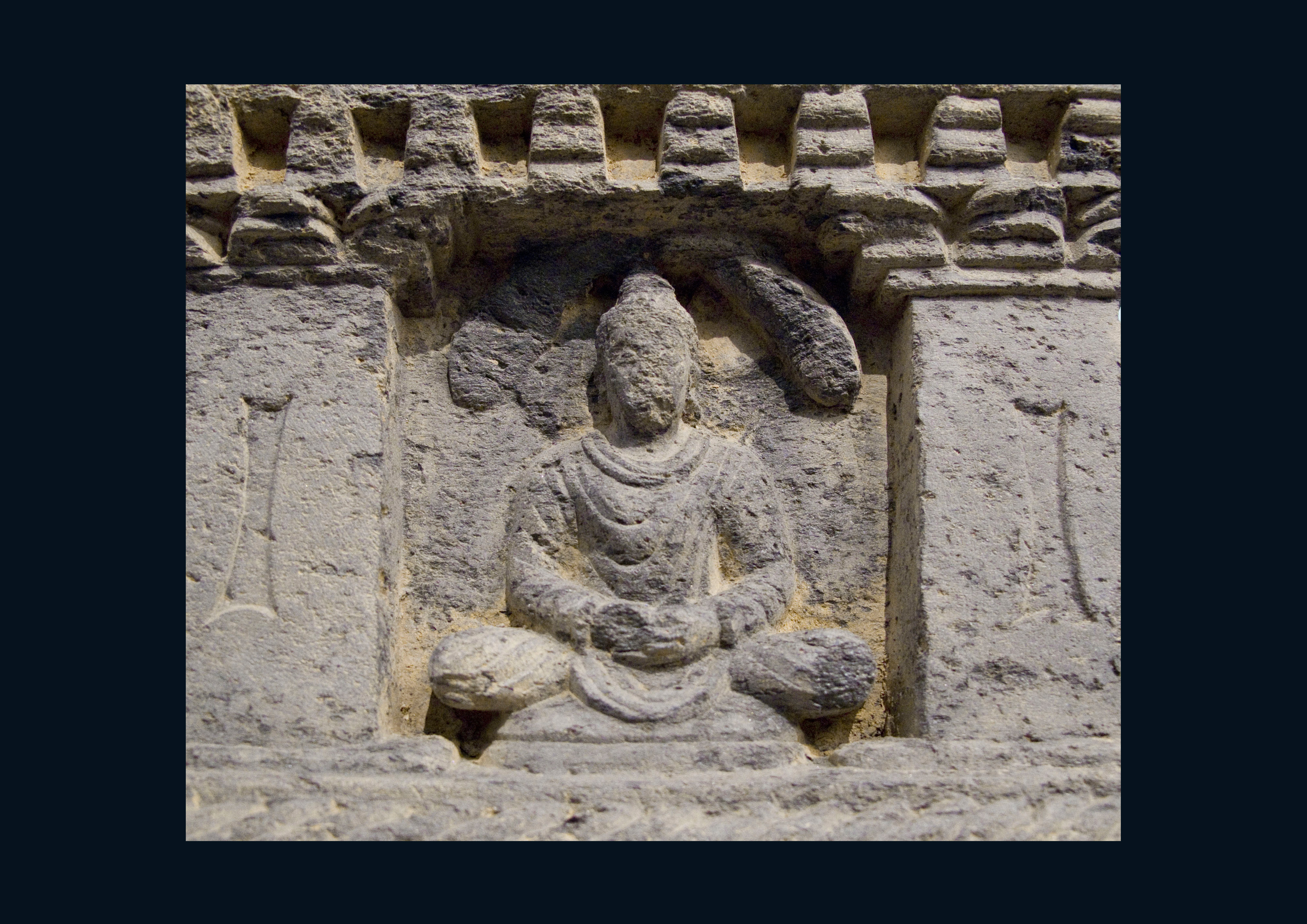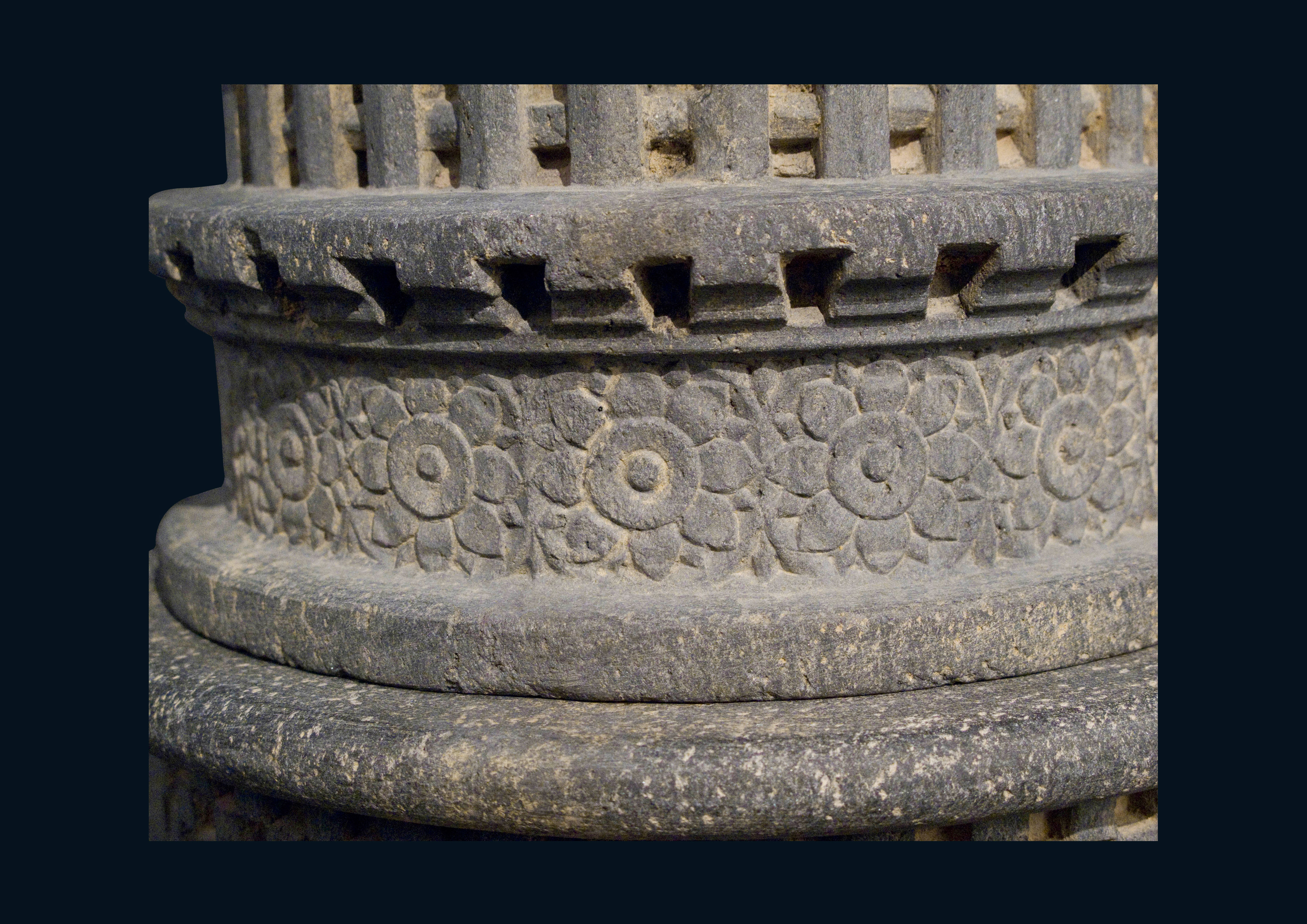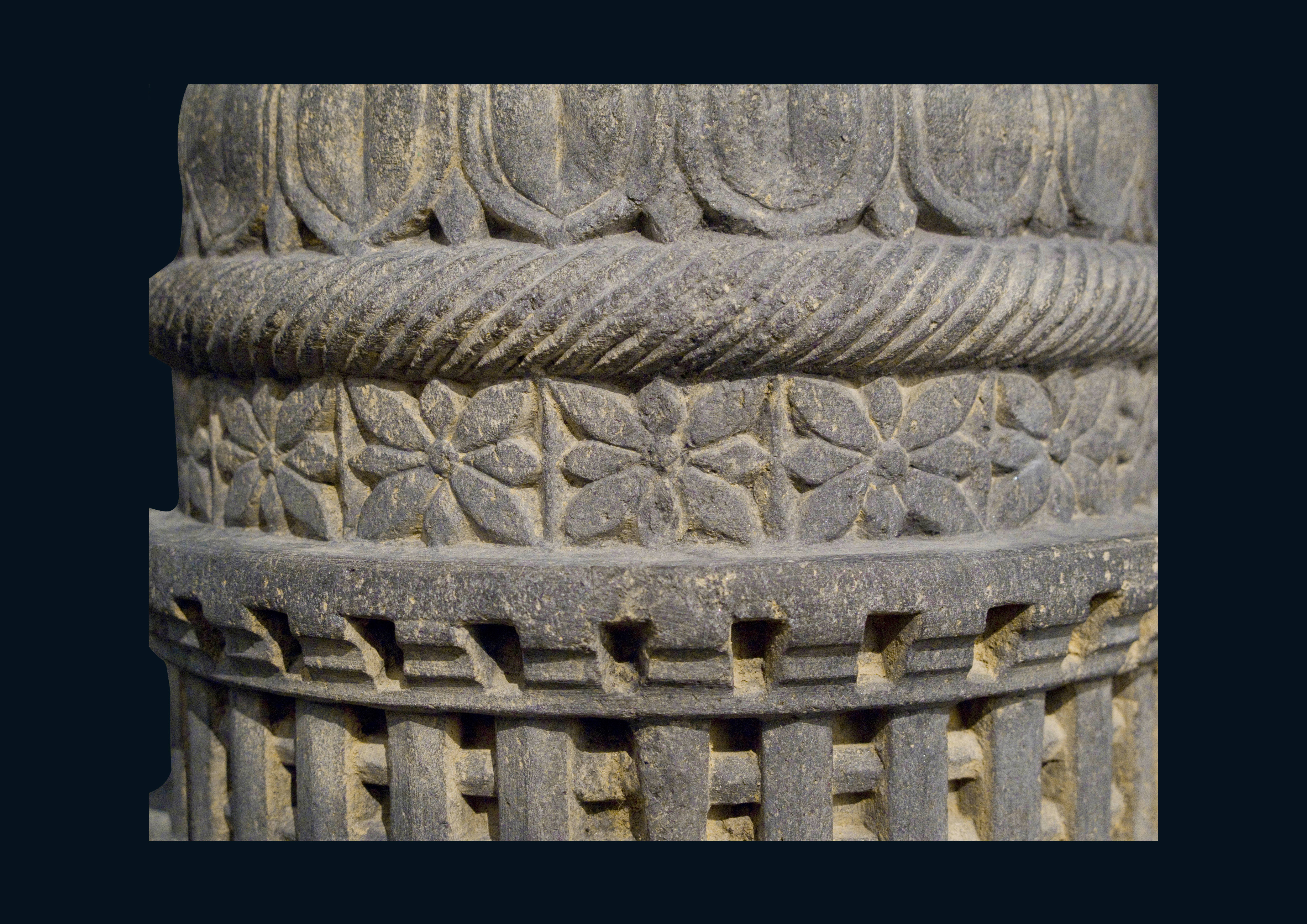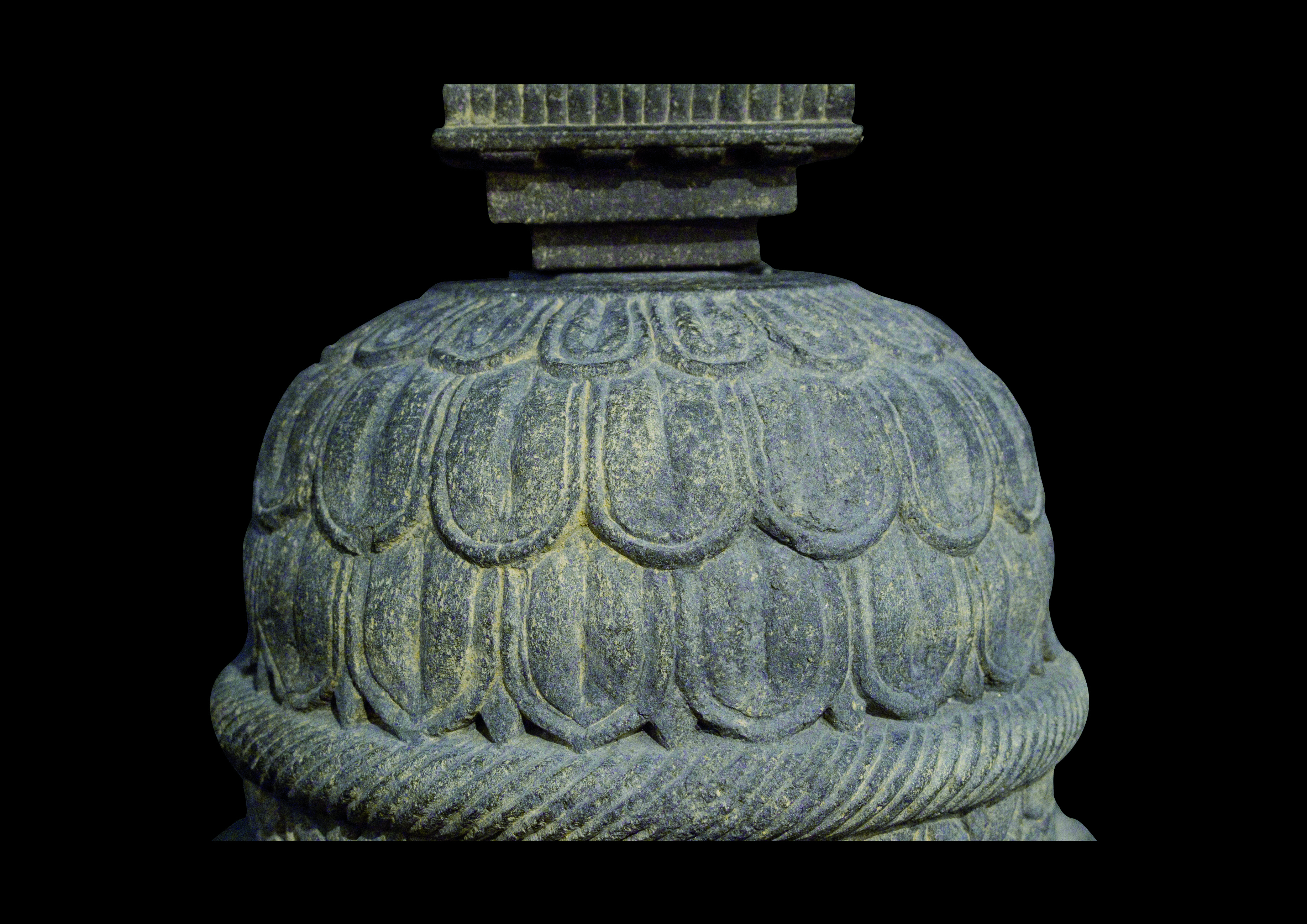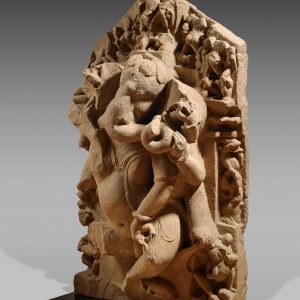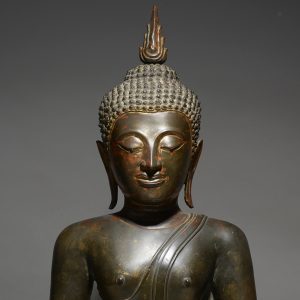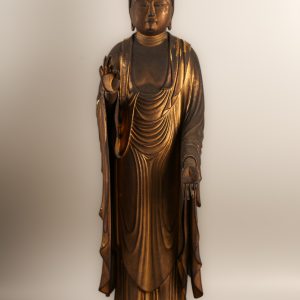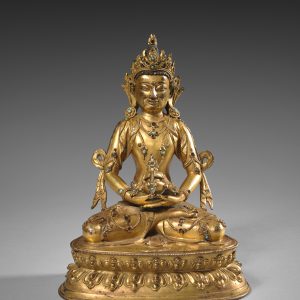Stūpa
Schist
Ancient region of Gandhāra (Northern Pakistan)
2nd -3rd century
H. 79 cm or 31 ¼ in
Description
Three sides of the rectangular base are decorated with lotus flowers while the fourth has two niches, each with a depiction of Buddha Śākyamuni. Each deity is seated in the lotus position in dhānāsana meditation. Both are the image of the Gandhāra Buddha, characterized by profound serenity. Their clothing has obviously been influenced by classic Mediterranean sculpture. The same is true of their hair, represented by gracefully waving lines that end in a bun to symbolize Buddha’s cranial bump. Above the pedestal circles a large checkerboard section and above that several sections of floral or geometric designs. The domed top is finely sculpted with three rows of petals. The harmikā is crowned with several circular platters forming a parasol.
After the cremation of the historic Buddha, his relics and ashes were given to eight kings who came to pay their final respects. These kings then placed them inside stūpa in various regions of India. Under the reign of Aśoka, the great protector of Buddhism who ruled during the 3rd century B.C., the cult of the stūpa grew, with worshipers circling clockwise around them.
A stūpa evokes the architecture of the cosmos. With the exception of a small inaccessible cavity to hold relics or objects, there is no open space inside. It is undoubtedly the most popular monument in Asia. Its origin lies in the Indian subcontinent but followed the spread of Buddhism, reaching well into the Far East.
Gandhāra stūpa were decorated with bas-reliefs depicting scenes from the lives of Buddha, with rich iconography and a style not typical of the region. This exceptional piece is large in size and finely sculpted with precision and naturalism. The perfect balance between the four geometric shapes contributes to the aesthetics of the piece. Its historic aspect is every bit as remarkable. It should be noted that such a perfectly preserved representation of a Gandhāra stūpa, and one of such quality, is extremely rare.
For another Gandhāra stūpa, see Das buddhistische Erbe Pakistans, Legenden, Kloster und Paradiese, Ch. Luczanits (ed.), Verlag Philip von Zabern, Mainz 2008, p. 174. For an in-depth study of Greco-Buddhist art, see the exhibit catalog of Pakistan, terre de rencontres held in 2010 at the Musée Guimet in Paris and L’art du Gandhara, Mario Bussagli, Encyclopédies d’aujourd’hui.
Provenance: Private collection, France, since the late 1970s.
Art Loss Register Certificate, ref. S00090098

